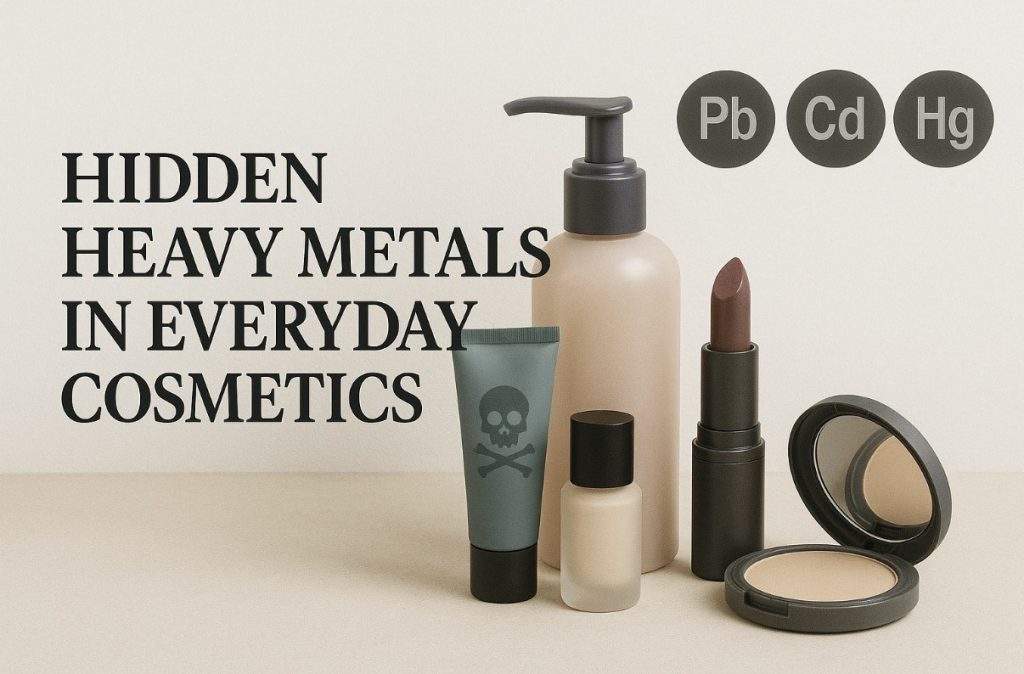What You Use May Be More Than Skin-Deep
When we think about cosmetic safety, most people look for “paraben-free” or “sulfate-free” labels but one of the biggest hidden risks isn’t even listed on the ingredient label: heavy-metal contamination.
Recent studies have found that cosmetics, especially lipsticks, eyeliners, and powders, can contain trace levels of lead, cadmium, arsenic, chromium, mercury, and nickel.
How Do These Metals Get In?
Heavy metals are rarely added intentionally. Instead, they often enter cosmetics through:
- Contaminated raw materials, such as mineral pigments, clays, mica, and talc.
- Manufacturing equipment or packaging that introduces metal residues.
- Imported or traditional products made with less regulatory oversight.
The FDA acknowledges these impurities and has recommended a limit of 10 ppm lead in lip and topical cosmetic products, yet studies worldwide still find products exceeding that threshold.
Why It Matters
Lead and other heavy metals are bioaccumulative toxins, meaning they build up in the body over time. Even small, repeated exposures can cause neurological, developmental, and reproductive harm. Lip products pose the greatest risk because trace amounts can be swallowed daily.
Recent testing supports this concern. A 2024 study titled “Heavy Metal Contamination in Cosmetics: An Analysis of Lead and Mercury Levels in Commonly Used Products” found lead concentrations reaching approximately 6.37 ppm in certain cosmetic items. In another 2025 report, ALS Global noted that plant- and mineral-based products are particularly susceptible to contamination, reinforcing the need for routine heavy-metal screening. Even more alarming, imported traditional eyeliners (kohl) have tested with extreme lead levels exceeding 80,000 ppm in some samples.
What Consumers & Brands Can Do
Consumers
- Choose brands that publish third-party testing for heavy metals.
- Limit high-pigment or metallic finishes, which tend to carry higher contamination risks.
- Properly dispose of expired makeup to prevent environmental release.
Manufacturers
- Source verified, low-contaminant pigments and test every batch.
- Increase transparency about raw-material testing and quality-control results.
The Bigger Picture
Heavy-metal exposure from cosmetics may be small, but its cumulative impact on people and the environment is significant. By demanding safer formulations and better testing, we can ensure that beauty products truly enhance, not harm, our health.
At Karl Environmental, we believe in clean science for clean beauty because what goes on your skin should never compromise your wellbeing or the planet.

